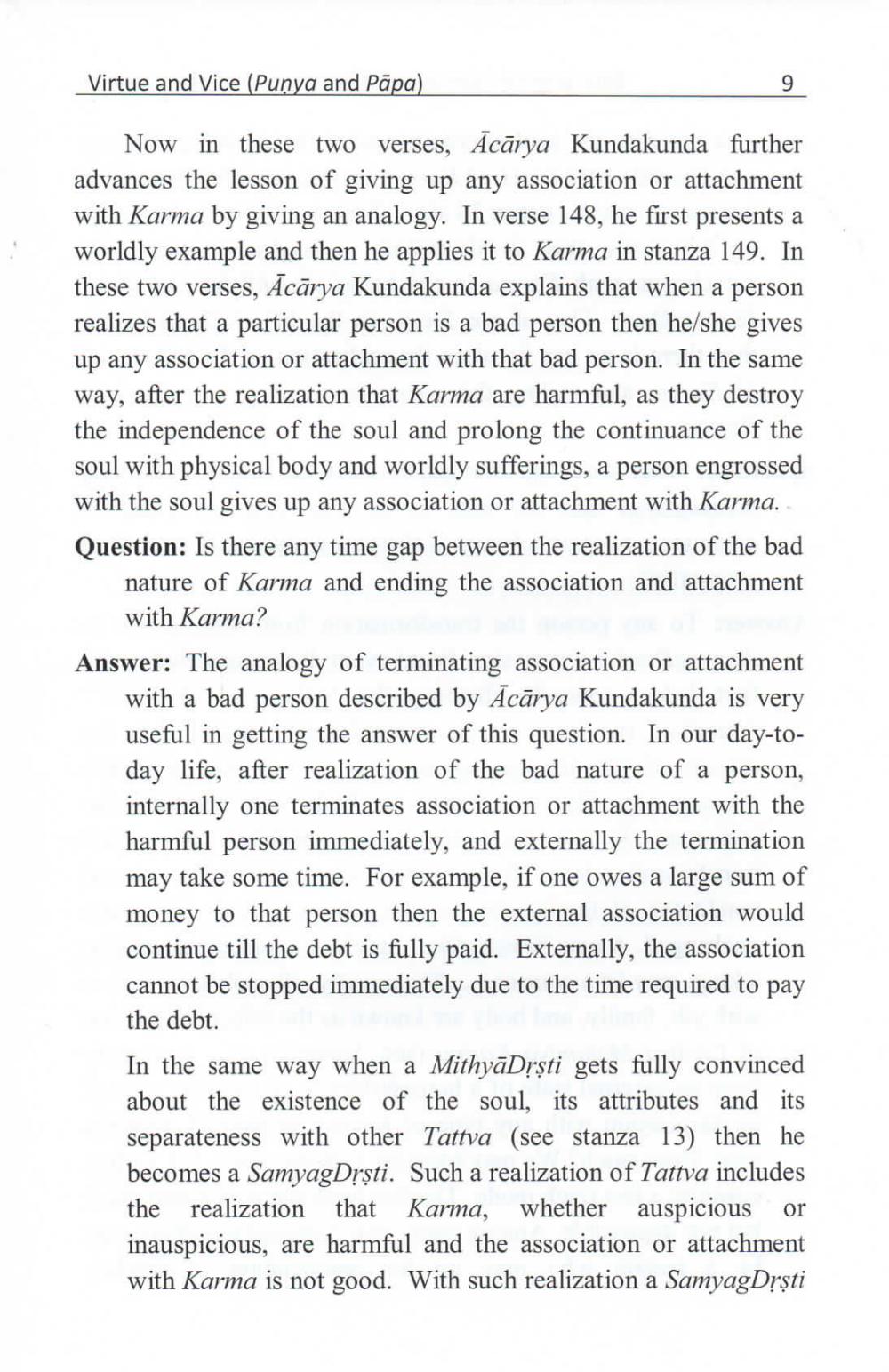________________
Virtue and Vice (Punya and Pāpa)
Now in these two verses, Ācārya Kundakunda further advances the lesson of giving up any association or attachment with Karma by giving an analogy. In verse 148, he first presents a worldly example and then he applies it to Karma in stanza 149. In these two verses, Ācārya Kundakunda explains that when a person realizes that a particular person is a bad person then he/she gives up any association or attachment with that bad person. In the same way, after the realization that Karma are harmful, as they destroy the independence of the soul and prolong the continuance of the soul with physical body and worldly sufferings, a person engrossed with the soul gives up any association or attachment with Karma. Question: Is there any time gap between the realization of the bad
nature of Karma and ending the association and attachment with Karma?
Answer: The analogy of terminating association or attachment
with a bad person described by Ācārya Kundakunda is very useful in getting the answer of this question. In our day-today life, after realization of the bad nature of a person, internally one terminates association or attachment with the harmful person immediately, and externally the termination may take some time. For example, if one owes a large sum of money to that person then the external association would continue till the debt is fully paid. Externally, the association cannot be stopped immediately due to the time required to pay the debt. In the same way when a MithyāDrști gets fully convinced about the existence of the soul, its attributes and its separateness with other Tattva (see stanza 13) then he becomes a SamyagDrşti. Such a realization of Tattva includes the realization that Karma, whether auspicious or inauspicious, are harmful and the association or attachment with Karma is not good. With such realization a SamyagDrști




